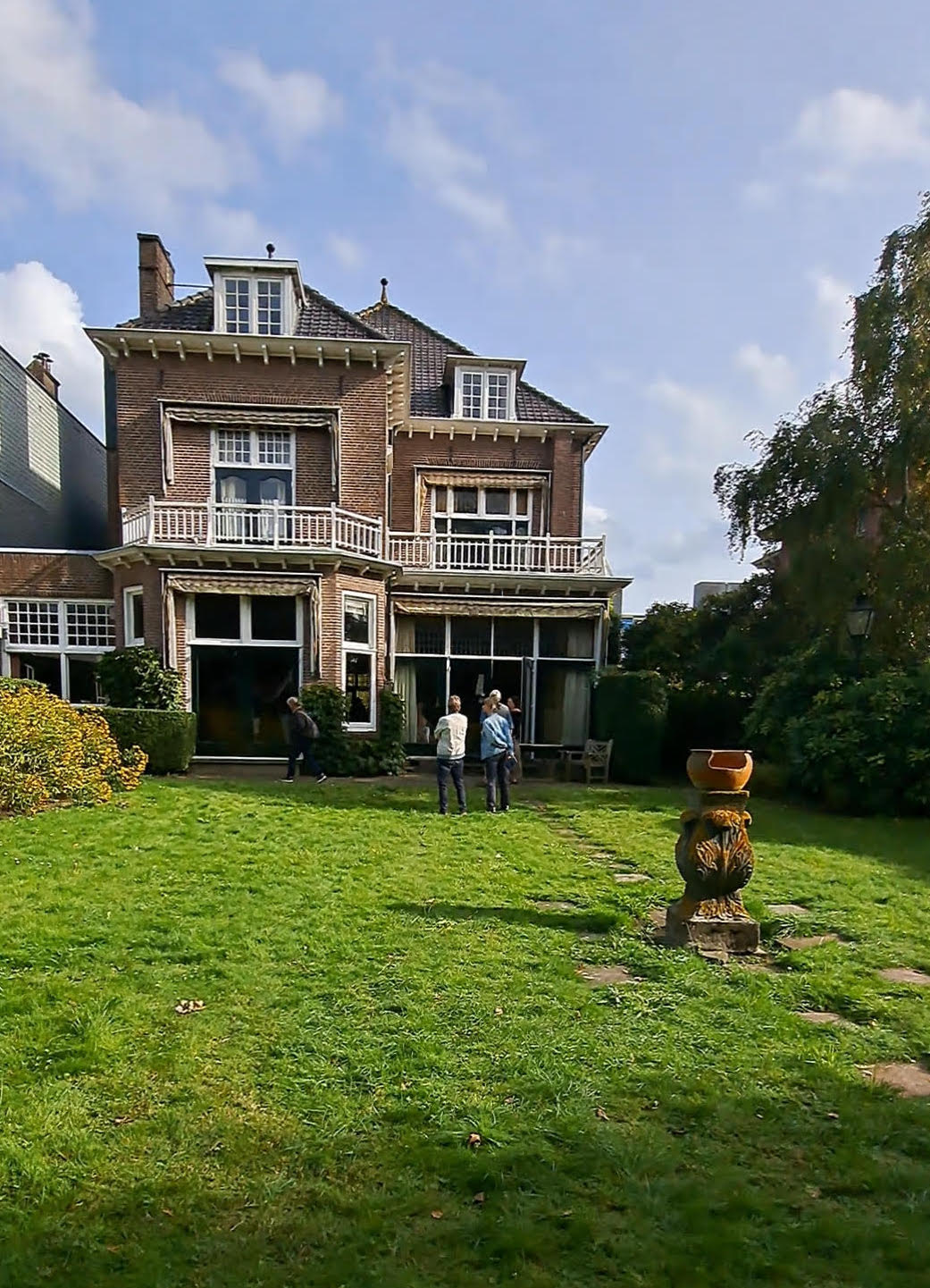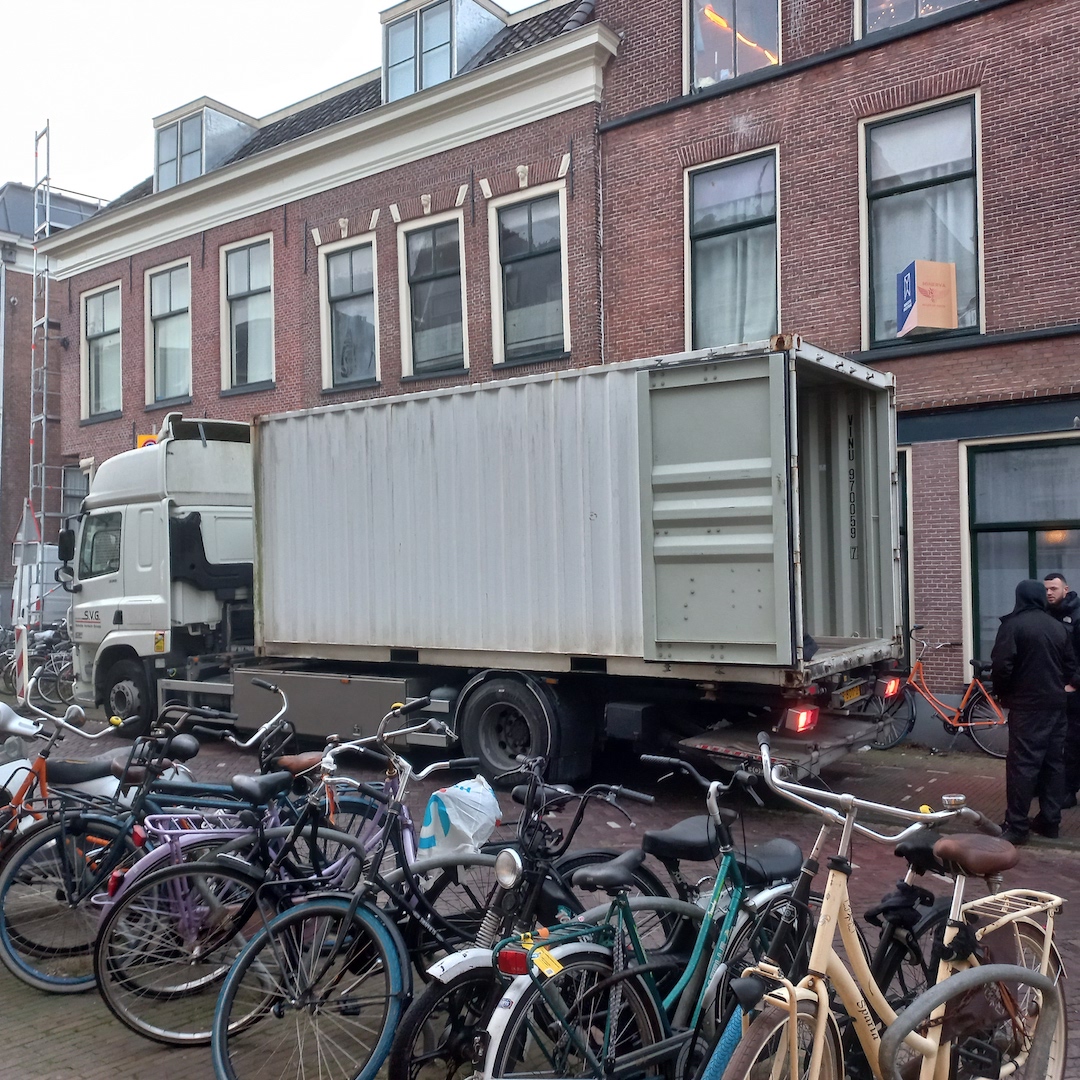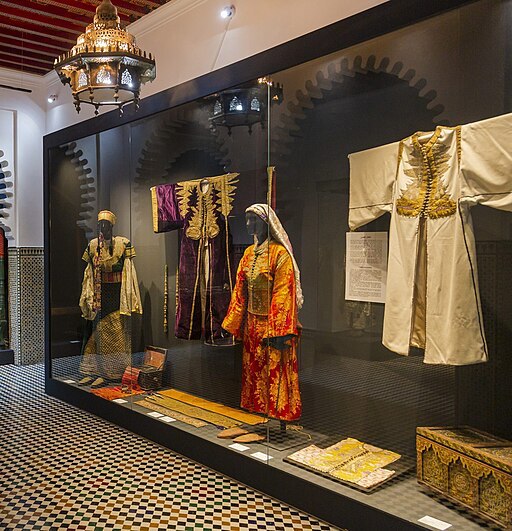(Leiden, 2 Nov. 2025) For the last year or so I have been muttering about having a textile garden at the TRC’s new home on the Boerhaavelaan (B6), Leiden. This is not a new idea and various museums, botanical gardens and local projects throughout Europe have set up dye plant gardens, such as that at the Palazzo Madama (Turin, Italy), Botanical Gardens, Cambridge, England , as well as the Amsterdam Colour Gardens. The main thing that was needed was a suitable garden and B6 gives us that.
 Boerhaavelaan 6, from the garden.However, we do not just want a 'mere' dye garden, instead we want to extend it to cover the world of textiles, including fibres, dyes and related items such as seeds used for decoration or nuts used for buttons. Not all the plants can easily be grown in Leiden (some require desert conditions, which rainy Leiden certainly does not have!), nor do we have a greenhouse (yet) where such plants could be grown. However, there are many plants we can start with and gradually expand as we get more experience over the next few years.
Boerhaavelaan 6, from the garden.However, we do not just want a 'mere' dye garden, instead we want to extend it to cover the world of textiles, including fibres, dyes and related items such as seeds used for decoration or nuts used for buttons. Not all the plants can easily be grown in Leiden (some require desert conditions, which rainy Leiden certainly does not have!), nor do we have a greenhouse (yet) where such plants could be grown. However, there are many plants we can start with and gradually expand as we get more experience over the next few years.
Another difference is that we do not want just pretty plants all in a row (to paraphrase an English nursery rhyme [Mary Mary Quite Contrary]), we want to use them. Such as having a patch of flax as part of the Crafts Council Nederlands Project, 1m2 flax, here in the Netherlands. There is also a group on the Boerhaavelaan who are very keen natural dyers, so perhaps we can grow a range of plants that they can use (think onions, weld, madder, etc). Then there are various schools in the neighbourhood, so perhaps setting up a dye plant project with them as part of sustainability? The plan is also to have the garden open to the general public during the office hours of the TRC.


















